The Dutch Marine Corps Rifle Platoon, 1978
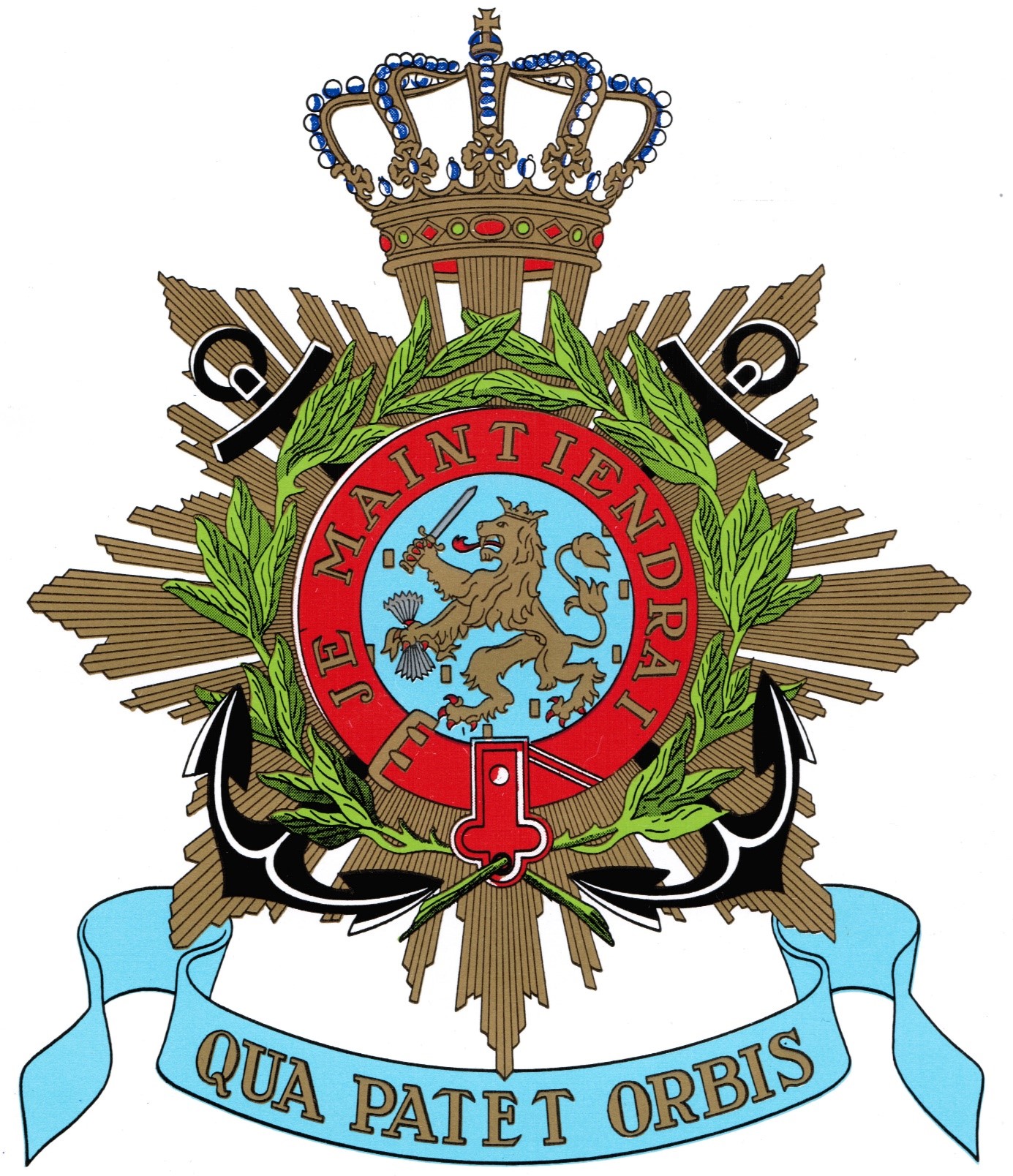
Introduction
For today’s post, we will consider the 1978 infantry platoon of the Dutch Marine Corps (Korps Mariniers).
During the second half of the Cold War, the Dutch Marine Corps played a role on NATO’s Northern flank in
Norway. As part of the British 3 Commando Brigade, the 1 Amphibious Combat Group could be quickly deployed
to Northern Norway to meet Soviet aggression. Befitting its role in Norway, 1 ACG was trained for mountain
and arctic warfare.
Meanwhile on the other side of the spectrum – and planet for that matter – 2 Amphibious Combat Group was
stationed on the Dutch possessions in the Caribbean, principally Curaçao and Aruba.
Trained in jungle warfare, these units could be deployed to the UK/NL Landing Force,
but only to non-arctic areas.
Prologue
As a source for this post, the
Handboek voor de Marinier of 1978 is used.
A Marine Corps equivalent to the Army’s
Handboek voor de Soldaat, this handbook/manual contains
the basic information every marine should know. Consequently, it also contains the table of organisation
and equipment for the infantry platoon.
This post is further supported by a number of Army manuals, including those on the MAG, LAW,
and a general weapons manual. As the Handboek voor de Marinier itself quotes from Army manuals,
it would appear manuals are entirely interchangeable between the two services.

Infanteriepeloton (infpel)

| Functie: | Rang: | Bewapening: | |
|---|---|---|---|
| pc | ELNTMARNS | pm | |
| opc | SMJRMARN ALG | pm | |
| schutter | TLV 84 mm | KPLMARNALG | P |
| helper | TLV 84 mm | MARN 1 | P |
| ordonnans | MARNVB 1 | P | |
| schutter | mortier 60 mm | KPLMARN ALG | P |
| helper | mortier 60 mm | MARN 1 | P |
| (1-4-5-24) | = | 1 off./4 o.off./5 kpls en 24 manschappen |
| cogp | = | commandogroep |
| gewgp | = | geweergroep |
| pc | = | pelotonscommandant |
| opc | = | opvolgend pelotonscommandant |
| pm | = | pistoolmitrailleur |
| P | = | pistool |
Infantry platoon (inf plt)

| Function: | Rank: | Armament: |
|---|---|---|
| PL | 1st Lieutenant | SMG |
| PSG | Sergeant major | SMG |
| Carl Gustav Gunner | Corporal | P |
| Carl Gustav Assistant [gunner] | Marine 1st class | P |
| Messenger | Signals Marine 1st class | P |
| Gunner 60 mm mortar | Corporal | P |
| Assistant [gunner] 60 mm mortar | Marine 1st class | P |
| (1-4-5-27) | = | 1 off./4 NCO/5 corporals and 24 enlisted men |
|---|---|---|
| plt hq | = | platoon headquarters |
| rifle sqd | = | rifle squad |
| PL | = | platoon leader |
| PSG | = | platoon sergeant (deputy platoon leader) |
| SMG | = | submachine gun [Uzi] |
| P | = | pistol [FN High Power] |

b. Geweergroep

| Functie: | Rang: | Bewapening: |
|---|---|---|
| gpc | SGTMARN ALG | pm |
| opvgpc | KPLMARN ALG | G |
| agsch | MARN 1 | LM 7,62 |
| hlpagsch | MARN 1 | G |
| agsch | MARN 1 | LM 7,62 |
| hlpagsch | MARN 1 | G |
| gewsch/mitrsch | MARN 1 | G/MAG 7,62 |
| gewsch/hlpmitrsch | MARN 1 | G/MAG 7,62 |
| gewsch | MARN 1 | G |
gpc |
= |
groepscommandant |
| opvgpc | = | opvolgend groepscommandant |
| agsch | = | automatisch-geweerschutter |
| hlpagsch | = | helper automatisch-geweerschutter |
| mitrsch | = | mitrailleurschutter |
| hlpmitrsch | = | helper mitrailleurschutter |
| gewsch | = | geweerschutter |
| G | = | geweer |
| LM 7,62 |
= |
mitrailleur FAL |
b. Rifle squad

| Function: | Rank: | Armament: |
|---|---|---|
| SL | Sergeant | SMG |
| ASL | Corporal | R |
| AR | Marine 1st class | LMG 7,62 |
| A AR | Marine 1st class | R |
| AR | Marine 1st class | LMG 7,62 |
| A AR | Marine 1st class | R |
| Rman/MG | Marine 1st class | R/MAG 7,62 |
| Rman/A MG | Marine 1st class | R/MAG 7,62 |
| Rman | Marine 1st class | R |
SL |
= |
squad leader |
| ASL | = | assistant squad leader |
| AR | = | automatic rifleman |
| A AR | = | assistant automatic rifleman |
| MG | = | mitrailleurschutter |
| A MG | = | helper mitrailleurschutter |
| Rman | = | rifleman |
| R | = | rifle [FN FAL] |
| LMG 7,62 |
= |
light machine gun FAL [FALO] |
The platoon
As we can see above, the infantry platoon is composed of a commando groep (platoon HQ) and three geweergroepen (rifle squads). With a total strength of 1 officer, 4 non-commissioned officers, 5 corporals, and 24 enlisted men, the size of the platoon is comparable to the Army’s infantry and mechanized infantry platoons.
The platoon HQ’s command consists of a pelotonscommandant (platoon leader), holding the rank of 1st lieutenant, an opvolgend pelotonscommandant (second-in-command) with the rank of sergeant-major.
For anti-tank purposes, the platoon possesses a single Carl Gustav M2, manned by a schutter TLV 84 mm and helper TLV 84 mm, the gunner and assistant [gunner] respectively. The gunner holds the rank of corporal, whilst the assistant is a marine 1st class. To maintain communications within the platoon and with the company, a single ordonnans (messenger) holding the rank of marine signaller 1st class is part of the platoon HQ.
Finally, the platoon has the means to deliver indirect fire with a 60mm mortar. Said mortar is operated by a schutter and helper, who are similarly to the Carl Gustav the gunner and assistant gunner. They hold the rank of corporal and marine 1st class respectively. For personal armament, the platoon leader and platoon sergeant both have an Uzi, whilst the rest of the platoon HQ had Browning High-Power Pistols. This is of course in addition to the crew-served weapons, the 60mm mortar and the Carl Gustav M2.
The squad
As the core of the infantry platoon, there are three heavily-armed rifle squads.
Led by a groepscommandant (squad leader) holding the rank of sergeant, an opvolgend groepscommandant (assistant squad leader) with the rank of corporal is present to take command in case the former becomes a casualty.
The bulk of the squad consists of two automatic rifle teams, both made up of an automatisch-geweerschutter (automatic rifleman) and helper automatisch-geweerschutter (assistant automatic rifleman). All four hold the rank of marine 1st class.
The bulk of the firepower, however, is provided by a three-man machine gun team. Although all three are given the role of geweerschutter (rifleman), the first two members of the team also take on the role of mitrailleurschutter and helper mitrailleurschutter, machine gunner and assistant machine gunner respectively.
Given his leadership role, the squad leader is provided with an Uzi submachine gun – a far lighter weapon than the FAL. The rest of the squad is equipped with some variant of the FAL, in case of the automatic riflemen, the FALO. Indeed, even the machine gunner carries an FAL, in addition to his MAG.

Armament
For a discussion of the FN Browning High Power, Uzi, FN FAL, and FN FALO, the reader is referred to the previous post.
By 1978, the platoon was equipped with a number of new heavy weapons and launchers, whilst its personal weaponry had remained the same.
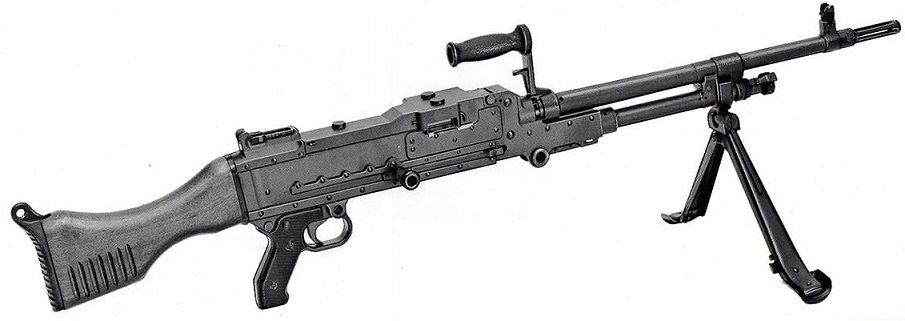
Once available, a three-man team was assigned to the weapon. For the gunner and assistant gunner, we turn to the MAG manual, albeit dated 1987.The gunner carries the MAG itself, the tool bag, and a single ammunition box. The assistant carries the spare barrel in its bag, and two ammunition boxes.
An ammunition bearer is not explicitly assigned in the above manual, but it would appear the Marine rifleman functioned as such nonetheless. Two ammunition boxes would seem to be a fitting load for him. For comparison’s sake, a modern American three-man MAG (or rather, M240B) crew may carry between 900 to 1200 rounds of ammunition , putting the Dutch total of 1150 rounds at the upper end of typical.
As the 230-round boxes cannot be attached to the weapon, the gunner is advised to divide his belt into four lengths of approximately 60 rounds when moving, so as to allow him to fire on the move.
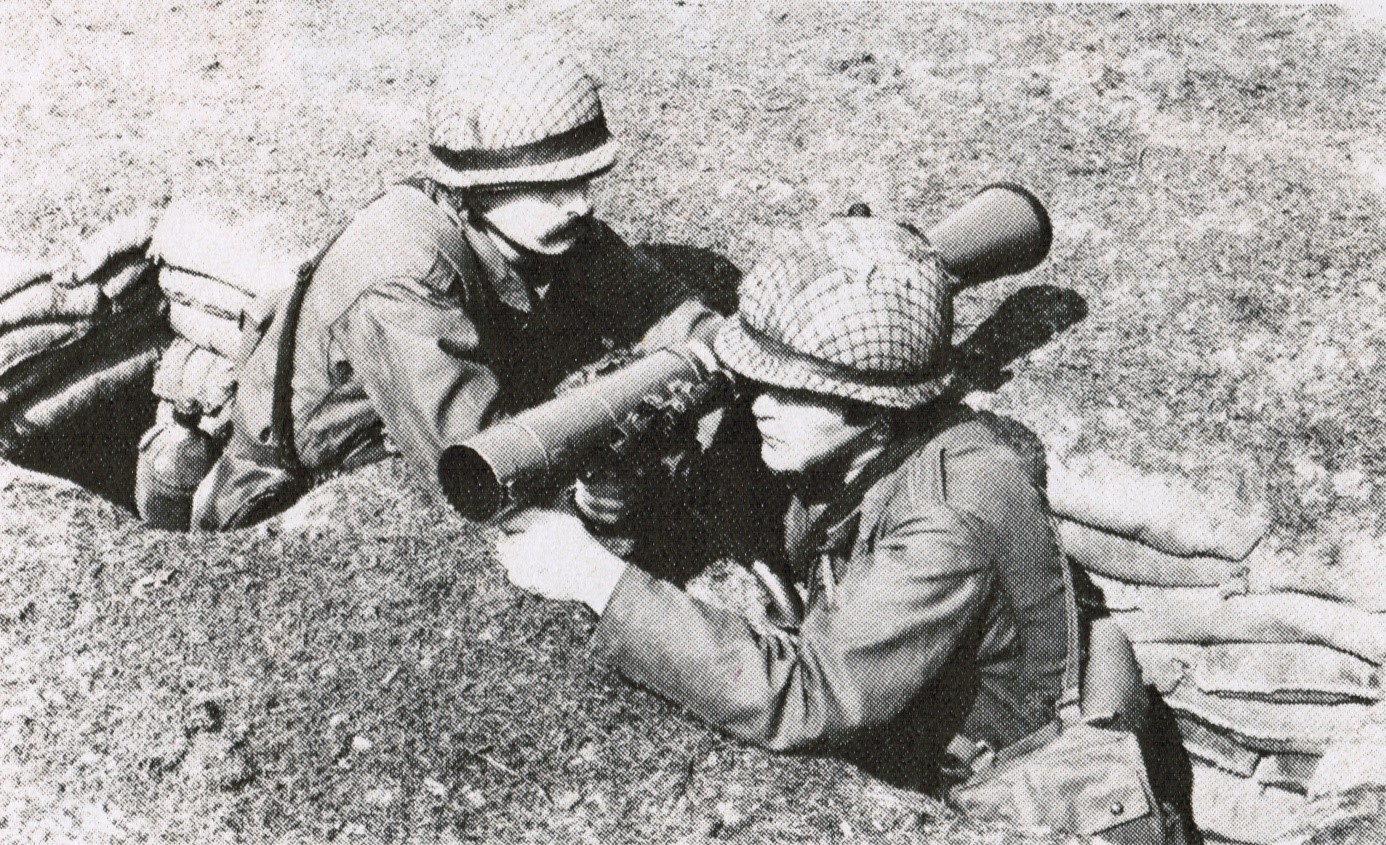
The assistant carried two ammunition cases which in turn carry two rounds each, for a total weight of 14.4kg (31.7lbs). Said ammunition is the Antitankbrisantgranaatpatroon lsp (HEAT-T) nr 97 met sb, capable of 30 to 40 centimetres (11.8-15.8in) of RHA penetration.
As the reader may have noticed, the Dutch language is capable of lengthy composite words, this one translating in full to “Anti-tank high explosive grenade cartridge tracer (HEAT-T) no. 97 with impact fuze”.
Information on the 60mm mortar is rather scarce: the current website of the Ministry of Defence notes that the current mortars are “French Hotchkiss-Brandt mortars which have been transformed at the end of the 70s to the current model TDA MO-60 Commando Mortar, in the MO-60 CV (drop-fire) and MO-60 CA (trigger fire) variants.”
The Handbrandpatroon van 35 mm, DM 34 is a single-shot disposable white-phosphorus munition. Regarding the name of this weapon, it is a literal translation of the German Handflammpatrone; DM34 is a number within the German ordnance system denoting Deutsche Munition 34. Both names translate to as much as hand [held] fire cartridge.
The weapon consists of a aluminium tube covered in cardboard, with a pistol grip at one end, and a muzzle cap at the other.
Specifications are as follows:
| Length width extended pistol grip | 440 mm | 17.3 in |
| Calibre | 35 mm | 1.38 in |
| Weight | 620 grammes | 1.37 lbs |
| Weight of the [explosive] charge | 240 grammes | 0.53 lbs |
| Maximum firing range | 90 m | 295 feet |
| Maximum time of flight | 1.9 sec | |
| Covered area with a 3m high explosion | 15×20m | 49×66ft |
After the weapon is deployed by extending the pistol grip, the striker is cocked, allowing the trigger to be operated. Upon firing, a primer triggers the first (expulsion) charge, in turn activating a second (expulsion) charge which expels the actual phosphorus charge.
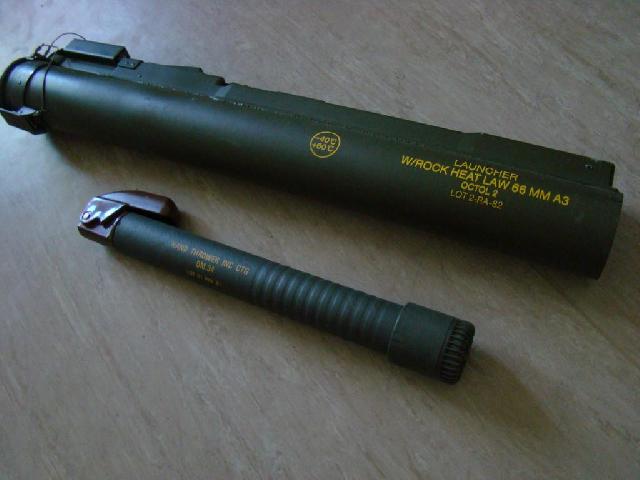
The DM34 munition is regarded as well suited to use:
- Against troop formations
- Against strengthened positions and bunkers
- Against vehicles
- During urban combat
- For marking purposes (due to the generation of smoke)
The DM34 munition is provided in a 3-cell pouch.

1. Storage notch to the pistol grip
2. Pistol grip
3. Pistol grip stops
4. Trigger
5. Trigger slide
6. Striker
7. Striker spring
8. Expulsion charge I
9. Launching tube
10. Muzzle cap
11. Phosphorus charge container
12. Expulsion charge II
13. Incendiary element
14. Explosive charge
15. Phosphorus charge

Specifications are as follows:
| LAW complete | 2.16 kg | 4.8 lbs |
|---|---|---|
| Launcher | 1.155 kg | 2.5 lbs |
| Rocket | 1.005 kg | 2.2 lbs |
| Launcher, closed | 650 mm | 25.6 in |
| Launcher, open | 878 mm | 34.6 in |
| Maximum effect range (moving targets) | 200 m | 218.7 yds |
| Maximum effect range (static targets) | 300 m | 328.1 yds |
| Penetrative capacity | ||
| Homogenous steel | 25-30 cm | 9.8-11.8 in |
| Concrete | 75 cm | 11.8 in |
| Sandbags | 180 cm | 29.5 in |
The exact number of LAWs carried is hard to pin down, though an Army manual implies 1 LAW per rifleman is normal.
In any case, the number would vary heavily depending on the expected number of enemy tanks.
Finally, we have a number of hand grenades, rifle grenades, and flares.
Although not named explicitly, the fragmentation grenades are the Nr 1C1 as manufactured by Artillerie Inrichtingen (Perhaps best known for manufacturing the AR-10), and the American Mark IIA1, either from American or Dutch production.
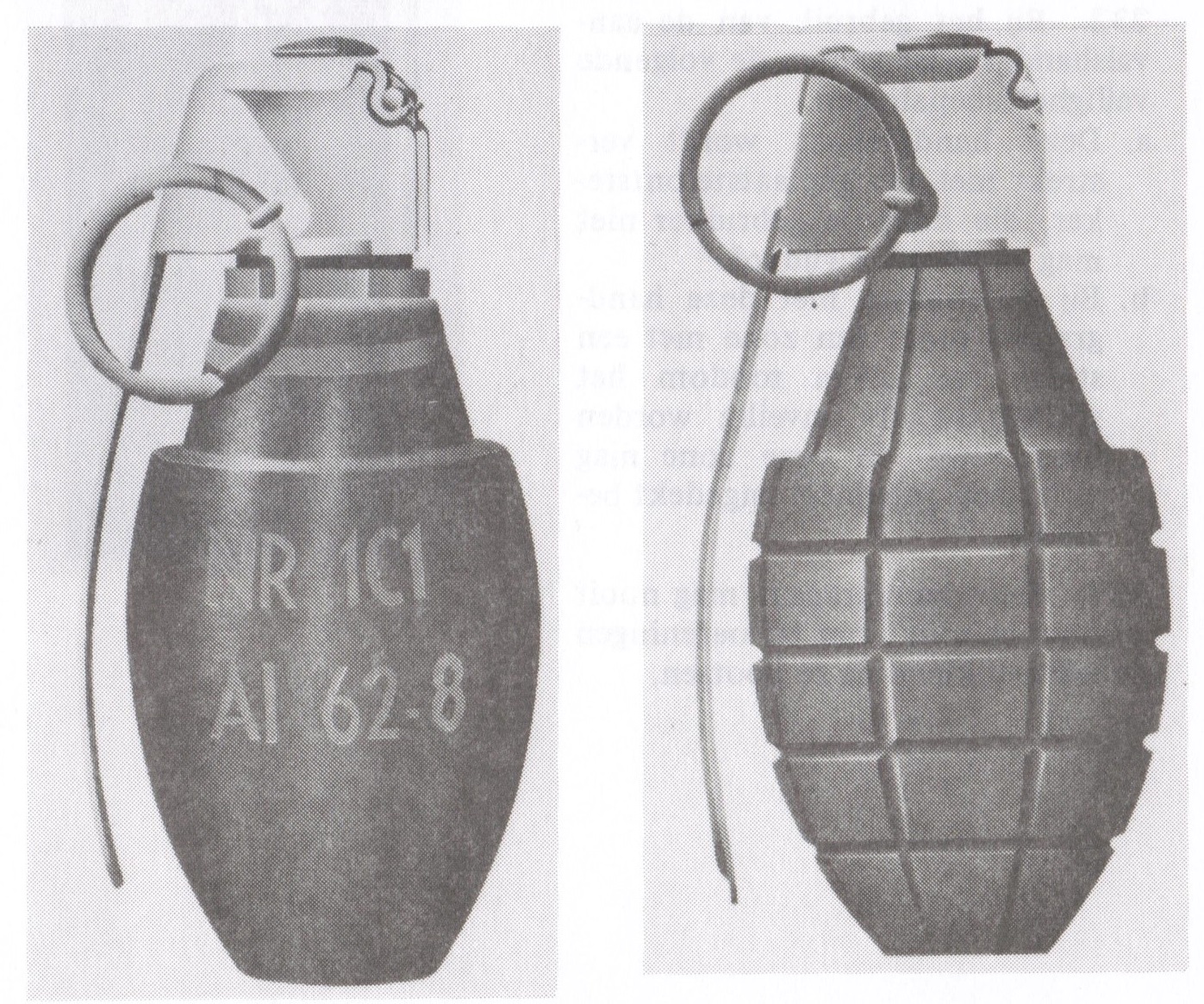
Finally, two smoke grenades are available, the Nr. 7 and Nr. 16, the latter utilizing white phoshphorus.
The (incomplete) specifications of the above grenades are sourced from Lexpev.nl, and are as follows:
| Length | Diameter | Weight | Explosive weight | |
|---|---|---|---|---|
| Nr 1C1 Frag | 115mm (w/o fuze) | 55mm | 670 gram | 60 gram TNT |
| Mk 2A1 Frag | 114mm | 57mm | ? | 55 gram TNT |
| Nr. 13C1 Offensive | 147mm | 56mm | 475 gram | 225 gram TNT |
| Nr. 7 Smoke | 151mm | 63mm | ? | 200 gram HC |
| Nr. 16 WP | 101mm | 50mm | ? | 180 gram WP |
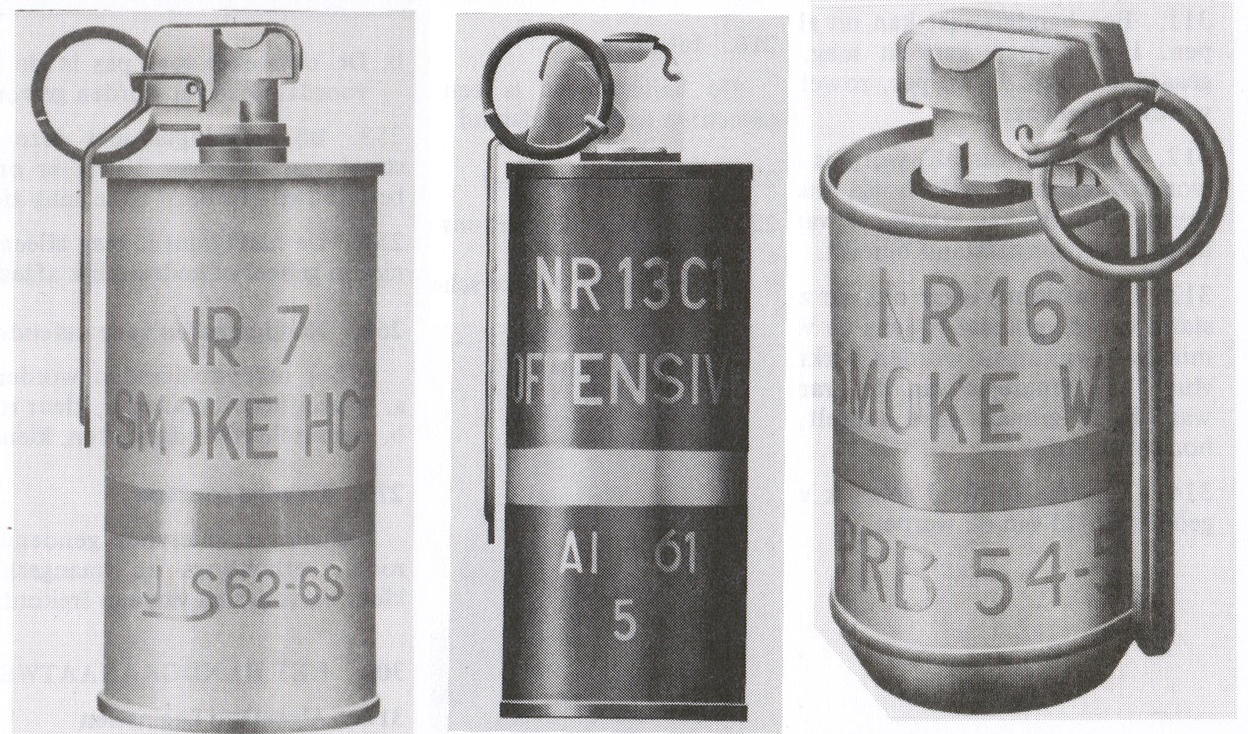
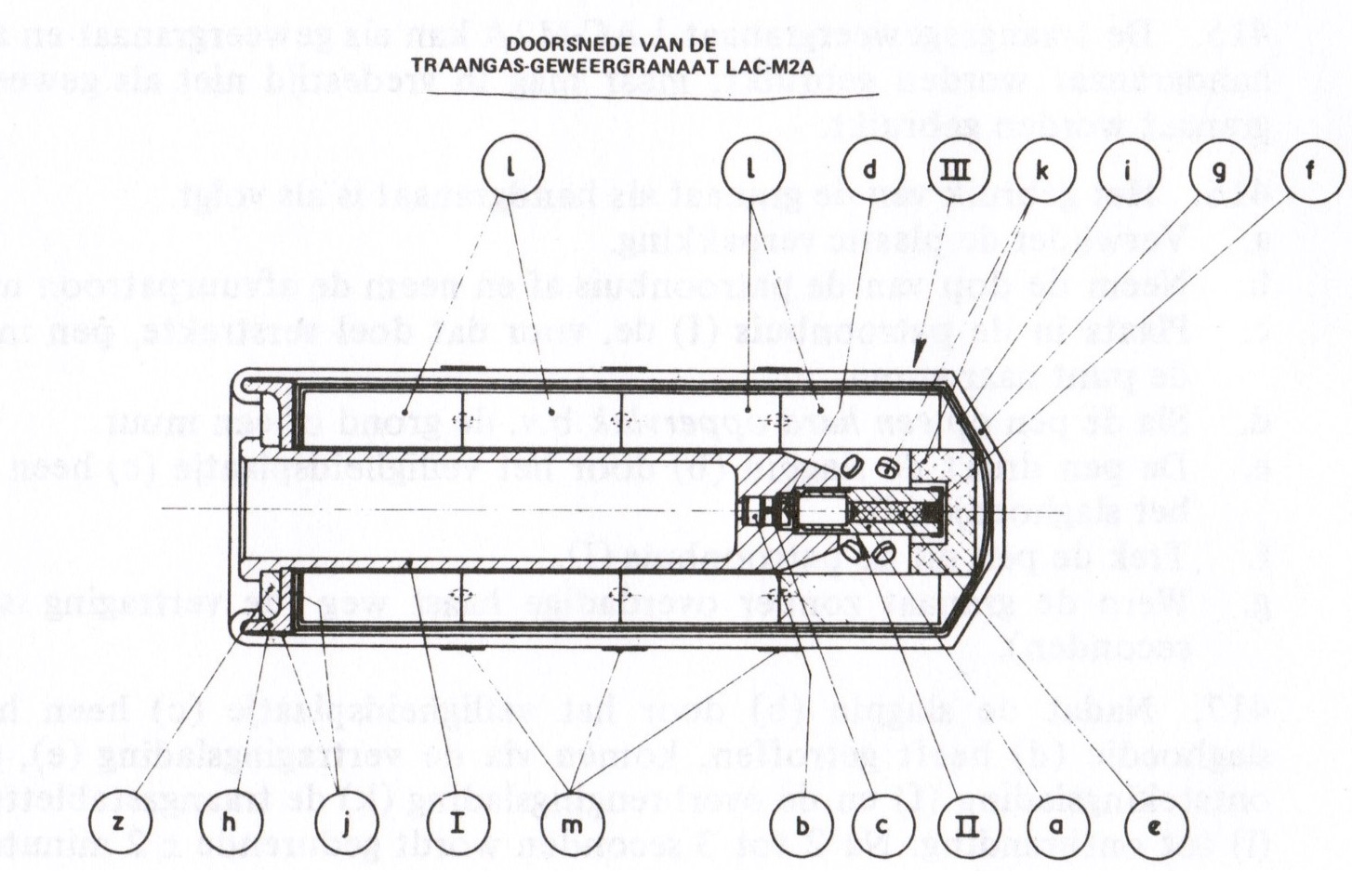
The presence of riot-control rifle grenades is most probably explained by the role Dutch Marines played in restoring order on Curaçao in 1969.
No mention is made of the Energa-rifle grenade, as the LAW had replaced it. Nonetheless, it is worth noting the FAL could use any NATO-standard rifle grenade.
Conclusion
In a sense, the Marine rifle squads have returned to their American roots, once again being capable of dividing in three teams. Nonetheless, the two-man automatic rifle teams and three-man MAG team should not be considered full-fledged fireteams, indeed, they are too small to act as such.
In any case, the squad is well-supplied with automatic weapons. Compared with Army units possessing a single MAG, the Marines possess far more firepower. Whilst anti-tank weapons (the M72 LAW is technically speaking not regarded as a weapon, instead being a munition) are absent at the squad level, this would appear to be a conscious decision. Given the terrain of Northern Norway compared with the Northern German Lowlands, the necessity for anti-tank weapons is far lower.
Although the platoon layout is solid, some modifications could be suggested. One area Dutch forces were extremely lacking compared to Soviet forces was in terms of scoped weapons: whereas a Soviet platoon would have one or perhaps multiple designated marksmen, the Dutch armed forces had a total of 885 KRR AI62 scopes for their FALs.
Nonetheless, the Dutch Marines would have been more than capable in meeting Soviet forces head-on.
Footnotes
